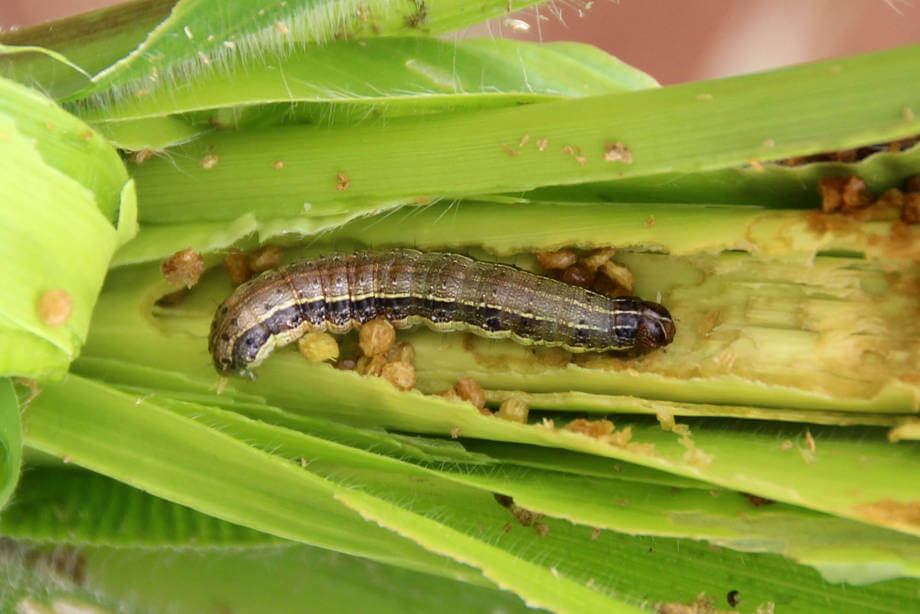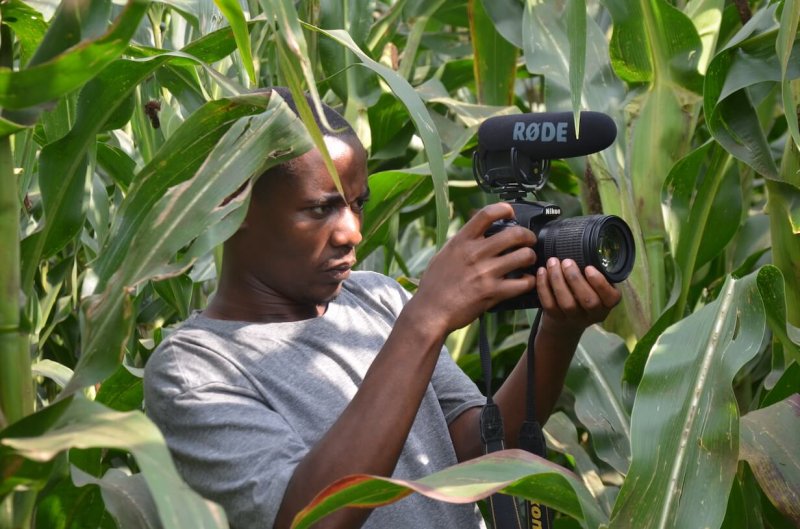Even if I was quite small during that time, I do remember the efforts my mother used on our farm in order to get a pretty harvest. Potatoes, maize (corn) and beans were the main crops my mother used to cultivate.
My school fees, school uniforms, school insurance, notebooks, pens, shoes and much more were coming from my mother’s harvest. She is the reason I am who I am today. Her dream was to see me in a position where I am helping the most vulnerable community in my village.
I do remember being with her in her green farm while she was grabbing some weedy grasses so that our maize can grow well. It was a most beautiful time that I still am missing.
As the days went on, my mother’s farm was no more producing the same harvest we used to get. Climate change, resistant pests and diseases have swept away all my mother’s harvest. Farming is no longer her option. What else she can do?
Food instability, lack of money, joblessness and a struggle to pay health care Insurance are now the characteristics of my family. There are many other farm households out there also still struggling like my family. Agriculture is becoming harder than ever.

Asking about the effects of fall armyworm, which has destroyed completely my family’s and neighbors’ maize and beans farms, is like asking someone who is bleeding if he /she has a wound. If you want to see the anger of maize and beans farmers, ask them about the history of fall armyworm in Rwanda between the years 2017-2018. My advice: don’t ask.
My neighbor who used to cultivate banana can testify about the bad experience of banana bacteria wilt. The mountains I used to see filled with green banana are now either empty due to banana bacteria wilt or replaced with other crops.
In my home country, Rwanda, “banana is symbol of richness.” Over 70 percent of Rwandans in the eastern part of the country consume banana foods three times per day, and over 80 percent depend on the added value of banana, selling beer, juice or fruits to generate money.
Beyond fall armyworm and banana bacteria wilt, the cassava mosaic virus arrived in the southern part of Rwanda in about 2015 and has left hundreds of thousands in loss. In the south, cassava was and still is the main crop that generates food and money. But cankers, leaf spot and cassava bacterial blight are still demolishing hundreds of hectares of the crop.
You and I, maybe we can’t feel the same pain a farmer feels when he/she cultivates certain acres with a loan from the bank or microfinance and unfortunately, the pests come and destroy all. Who is going to pay back the loan? Where is food going to come from? Health insurance? School fees? Money? Our farmers whom we are relying on for survival are suffering more than any other person in this world.
In the western part of Rwanda, where farmers grow potatoes, bees have been greatly reduced and bee farmers have already closed their hives or moved them to some other part of the country. Due to the overuse of pesticides, conserving biodiversity is another big challenge.
It was confirmed that overuse of pesticides not only kills insects, including bees and ants, and some birds, but also destroys the life of people, according to the World Health Organization (WHO). Imagine the lungs of those people who are using extra pesticides day to day to save their crops. Meanwhile, they are demolishing not only themselves but also biodiversity in general.
It has taken me almost four years to realize that science can provide a longtime solution rather than pesticides. For decades, scientists have researched improved seeds with the ability to resist climate change (drought), use less pesticides, increase yields and save the planet. They have come up with a solution — mainly, genetically modified (GM) crops — that have the capability to save the world.
Hundreds of research projects were undertaken by professional entities on risks that may occur when human beings and animals consume GM crops, or the impacts on nature when they are planted in the environment. Among them are the World Health Organization, United Nations Environment Progam, World Food Program, University of Pretoria, University of Nigeria, Cornell University, California University at Davis and Harvard Business School, to list a few. Millions of US dollars were sent out to many countries around the world to undertake risk assessment. But ultimately, not one entity has shown any risk to humans or animals that consumed GMOs or any negative side of releasing GMOs in the environment.
The results from the above entities have led many African countries to adopt GM crops. For example, South Africa has been growing insect-resistant Bt (Bacillus thuringiensis) corn since 1996 and today the country also has Bt cotton and soybeans. In over 20 years, no UN agency has ever shown any risk in consuming Bt maize or soybeans in South Africa.
Today, Bangladesh is the country that can give you testimonies on how Bt brinjal (eggplant) has lifted up thousands of Bangladeshis from poverty and food instability to the level of food security and a six-fold increase in incomes. The country adopted this technology after many farmers suffered crop losses due to climate change and pests.
Due to the special interests of certain people, especially those in the pesticide industries, GM crops have been misrepresented, leading to bad assumptions among the public. Truthfully, the pesticide companies know the potential of GM crops and they are afraid of it. To limit the general public from adopting these agricultural technologies, “paid people” are coming up every day and they call themselves ACTIVISTS.
Their objective and goals are to mislead people. They don’t want to hear the tears and struggles of our mothers, sisters and brothers who are suffering night and day due to food instability, pests and plant diseases. They are outside just making noise and misleading the world while getting paid, quite possibly by the pesticide companies.
If South Africa, Sudan, America, China, India, Brazil, Paraguay, Argentina and Australia and many other countries have used GM crops to secure their food supply and generate billions of dollars from exports, and no study has ever scientifically shown or been published that describes any risk from consuming GMOs, what are the African countries waiting for? Please hear the evidence from scientists, see the tears and agony of our farmers and then make the right decision that benefits our farmers.
Jean Claude Habimana is a science and agriculture communicator, founder of Rwanda Environment and Agriculture Communications and a 2019 Cornell Alliance for Science Global Leadership Fellow.
This article originally ran at the Cornell Alliance for Science and has been republished here with permission. Follow the Alliance for Science on Twitter @ScienceAlly































